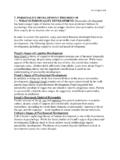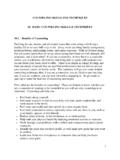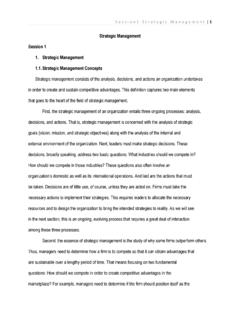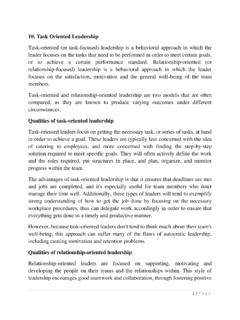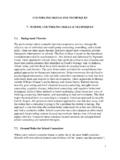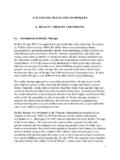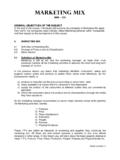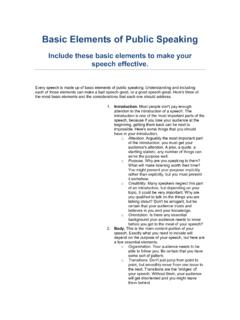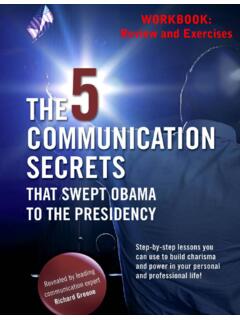Transcription of 5. THE USE OF SPACE WHILE PUBLIC SPEAKING 5.1 USING …
1 SEC 4 Page 1 of 7 5. THE USE OF SPACE WHILE PUBLIC SPEAKING USING SPACE : Filler words including um and uh are never written into a speech, and add nothing when a speaker utters them. Yet these insidious verbal hiccups are ubiquitous, uttered by most speakers in most speeches every day. What s the Problem? Some people adopt a zero tolerance policy when it comes to filler words, believing that a few ruin the delivery and invalidate an otherwise solid speech. An occasional filler word does not trump passion and a great message. Furthermore, audience members comment that an occasional filler word makes the speaker seem human (and not robotic).
2 Nonetheless, speakers should strive to minimize filler words. They contribute nothing, and weaken your effectiveness as as a speaker in two primary ways: Filler words represent verbal static that has to be filtered out by your audience. (It s one of the communication barriers cited in a recent article by guest author Stacey Hanke.) Why say it if the audience has to immediately filter it out? Repeated and excessive use of filler words weakens your credibility. It may be perceived as indicating lack of preparation, lack of knowledge, or lack of passion. All of these perceptions are bad for you. Filler Sounds, Filler Words, and Filler phrases Filler Sounds um, uh, ah, mm Filler Words basically, actually, literally Filler phrases I think that , you know , what I m trying to say is All of these and there are more in each category contribute nothing and could be completely wiped from your vocal patterns without any loss in meaning.
3 [Note: There are cases where some of the words/ phrases do convey meaning, but this is rare.] A Strategy for Removing Filler Words from Your Speech SEC 4 Page 2 of 7 I wish there were a switch that could be flipped to strike these from a speaker s vocabulary. (I would flip the switch for myself!) Since the magic switch is elusive, here are the steps I recommend for minimizing these fillers. Step 1 Assess how often you are USING filler words. Before you embark on an effort to extinguish filler words, you should assess how frequently you utter filler words in your presentations. There are three easy ways to do this: 1. Recruit an audience member to track it and provide feedback.
4 Ask them not only to provide a count of each filler used, but also to comment on the impact. 2. Record your voice, and do an objective analysis. I occasionally do this with a digital voice recorder. This can be done non-obtrusively for nearly any speech you deliver. 3. Record yourself on video. This is marginally more obtrusive, but delivers more benefits. You get verbal feedback, but you also get to see the expressions on your face and what happens to your eyes when you filling in words. Your goal in assessment is to answer the following: How often are you inserting filler words? Are they distracting? Are they undermining your credibility?
5 Step 2 Understand why you are doing it, and why it is unnecessary. Filler words that is, filler sounds, filler words, and filler phrases are inserted when our brain needs a moment to catch up to our mouth. In certain contexts, filler words can serve a minor purpose. In a phone conversation, for example, a filler word sends a signal to the other person which says I m still thinking, and I m not willing to pass the conversation back to you just yet. In this way, the filler word fills the otherwise dead SPACE which might indicate that you have completed your thought. In the majority of PUBLIC SPEAKING situations, however, this is a completely useless signal.
6 There isn t any risk of someone in the audience taking over as soon as you SEC 4 Page 3 of 7 go silent for a moment. You don t need to fill that SPACE to say that you re thinking. You just need to .. think, and your audience will understand. Step 3 Raise your level of preparation. I have observed my filler word usage is highest when my preparation is lowest. Failure to prepare adequately has two effects: 1. Your brain needs to create words on the fly, as opposed to pulling them from (preparation) memory. This increases cognitive strain, making it more likely that you ll fall behind. 2. You are (usually) more nervous when unprepared. Feeling nervous makes most people speak quicker, thus making it more likely that your brain won t keep up.
7 One additional aspect of preparation which merits mentioning is the importance ofadequate rest. When you are rested, your brain will be sharper and you will find it easier to articulate your thoughts without stumbling. Adequate preparation (which has many other benefits) will thus reduce the occurrence of filler words. As speakers force more and more content into their presentation, they ll have to talk faster and faster to complete it on time. Avoid this temptation. Step 4A Slow down. Slowing your pace will also reduce those um s and ah s, because it makes it easier for your brain to keep up. It doesn t have to be a drastic change; even a modest reduction in pace will help.
8 As an added bonus, SPEAKING a bit slower probably improves the ability of your audience to understand you. To make this possible, you must be realistic about your time constraints and the amount of material you have. As speakers force more and more content into their presentation, they ll have to talk faster and faster to complete it on time. Avoid this temptation. Step 4B Embrace the pause. The best advice I ever received to reduce ums and ahs is to just pause. Replace the filler word(s) with silence. Since you ve probably become accustomed to USING SEC 4 Page 4 of 7 filler words, replacing them with silence will take practice. Commit yourself to the change, and it will happen.
9 Step 5 Monitor your progress, and be patient. Every so often, step back and monitor your progress. Revisit the assessment tasks in Step 1, and compare the results. Have you reduced the frequency of filler words in your speech? Have you reduced the negative impact on your effectiveness caused by USING filler words? Do you notice a correlation between preparedness and SPEAKING filler-free? Is your pace slower? Are you simply pausing when you think about what to say next? Gesticulation: A gesture is a form of non-verbal communication or non-vocal communication in which visible bodily actions communicate particular messages, either in place of, or in conjunction with, speech.
10 Gestures include movement of the hands, face, or other parts of the body. Gestures differ from physical non-verbal communication that does not communicate specific messages, such as purely expressive displays, proxemics, or displays of joint attention. Gestures allow individuals to communicate a variety of feelings and thoughts, from contempt and hostility to approval and affection, often together withbody language in addition to words when they speak. Gesture processing takes place in areas of the brain such as Broca's and Wernicke's areas, which are used by speech and sign language. In fact, language is thought to have evolved from manual gestures.
